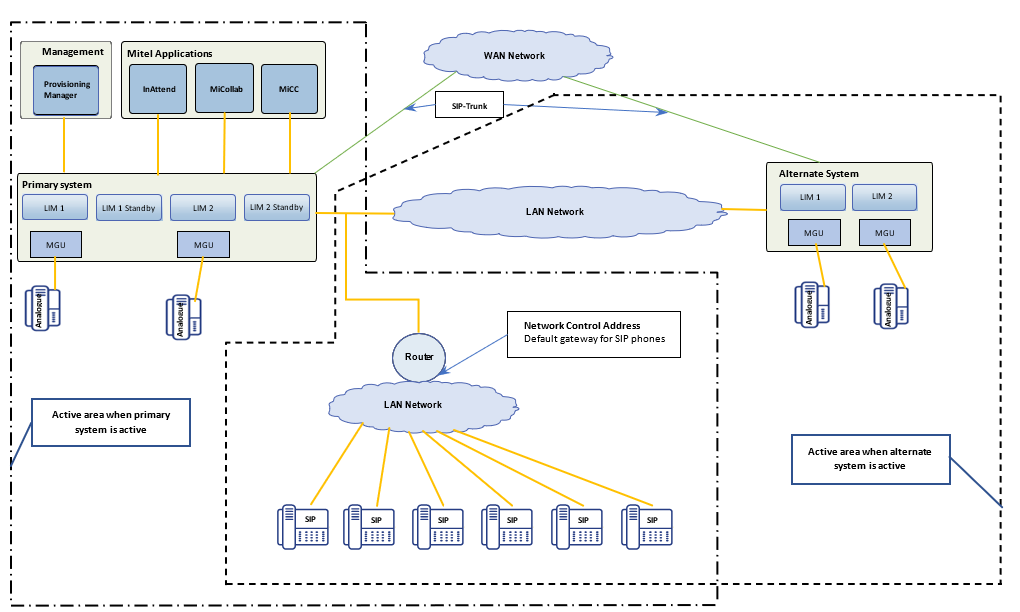Overview
System redundancy reduces the likelihood of events such as power outages, floods, HVAC (Heating, Ventilation, and Air Conditioning) failures, lightning strikes, impact of tornadoes, and building fires that would disrupt telephony services.
Two almost identical systems, a primary system and a dedicated alternate system, are configured. For details see the System Redundancy Functionality, Prerequisites section and the Capacity and Limitations section. The two systems should be deployed in different geographic locations.

Under normal circumstances the primary system is active and handles all telephony services. The alternate system is running but does not handle any telephony services; that is, it is passive.
When there is a disruption, (for example, power outage of the primary system), the alternate system can take over the tasks of the primary system. This way, the alternate system becomes active and provides the telephony services when the primary system goes out of order. For more information, see details in the Interaction with Other Features section.
The IP endpoints should be so configured that these can register with both the primary system and the alternate system.
The alternate system is prepared with exchange data from the primary system.
The takeover in the event of failure (takeover by the alternate system from the primary system) and recovery from failure (takeover by the primary system from the alternate system) can be configured to be manual or automatic. The recommended configuration is automatic takeover at failure and manual takeover at recovery.
If automatic takeover is configured, network redundancy between the primary and alternate system reduces the likelihood of both the systems running telephony services simultaneously.
If manual takeover is configured, the takeover must be ordered by using the system redundancy maintenance utility.
External applications and equipment must also be able to detect that the primary system is out of order (for example, calls via SIP trunks must be routed to the alternate system).
All servers used in the primary and the alternate systems must have similar capacities for a well-functioning environment.